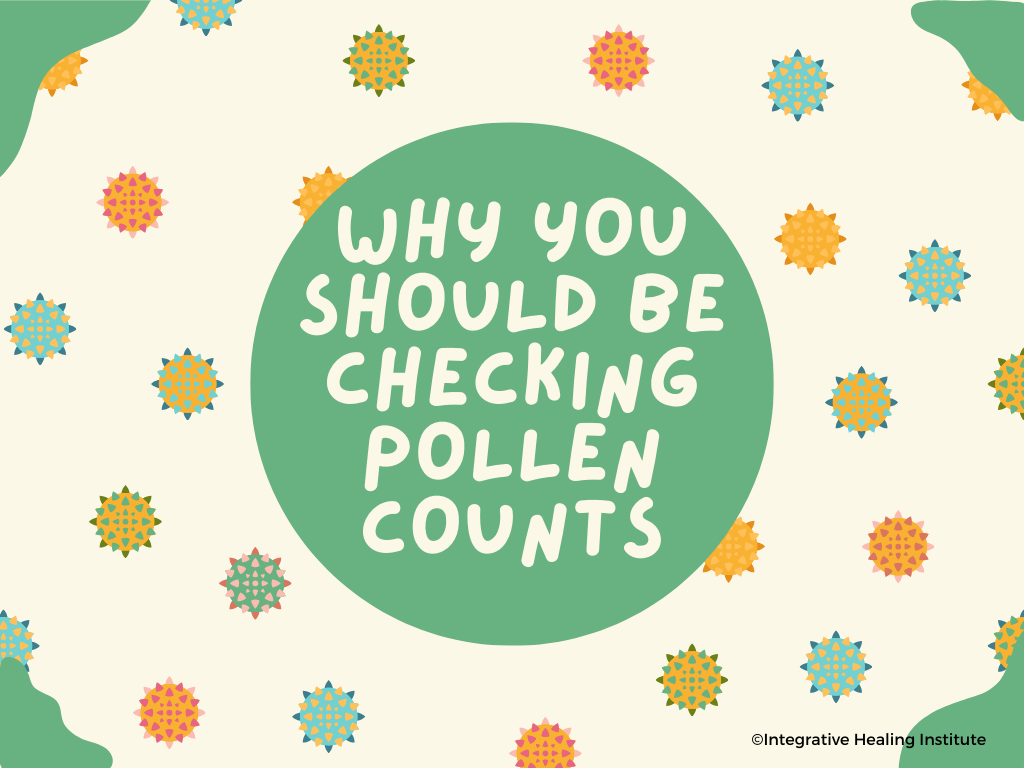Pollen counts are a great way for many people to track their allergens. Not only is it important to know what triggers your allergies, but it can also help you plan when you know you’ll be outside for longer periods of time. In this blog, we’ll cover the history of pollen counts, what pollen counts are, how they are actually measured, and why you should be checking them regularly when you suffer from allergies.
Table of contents
How did pollen counts get started?
Pollen counts were popularized by Dr. William Frankland, a British immunologist and allergist. He grew up in the British countryside and suffered from hay fever. After attending medical school in the 1930s, Dr. Frankland served in the British Army during World War 2 and was held as a POW for 3 years. After returning to England, he worked as a clinician with allergy patients and he served as an assistant to Alexander Fleming in the development of penicillin.
Dr. Frankland was ahead of his time in supporting several groundbreaking medical theories, including the hygiene hypothesis (early childhood exposure to microorganisms helps to protect against allergies and strengthens the immune system) and immunotherapy (also known as allergen desensitization using plant proteins). He also conducted experiments on himself by subjecting himself to bug bites in order to better understand how desensitization to allergens worked, eventually causing himself to go into anaphylaxis and having to be revived with adrenaline.
In the 1960s, Dr. Frankland had a pollen trap installed on the roof of St. Mary’s hospital and had the daily pollen counts distributed on British news, to better inform those suffering from allergies. He actively worked in research even after turning 100, publishing over 100 articles and academic papers on allergies. Dr. Frankland died from COVID-19 at age 108 in 2020.
What do pollen counts measure?
Pollen counts measure how many grains of pollen are in the air at a specific time. A higher count means a greater chance of suffering from symptoms. Usually pollen counts are broken up into families, such as grasses or trees, to help allergy sufferers know what’s bothering them. Each family has a different scale of what is considered "Low" to "Very High."

What are the methods for counting pollen?
Typically pollen counts are taken using a rotorod. A rotorod uses 2 silicone grease-coated arms attached to a battery operated spinning device that collects airborne pollen usually over 24 hours. The rods are then examined and the pollen grains are counted and then converted into units of grains per cubic meter of air. This process can take up to a few hours to identify and count tiny pollen grains under a microscope.
Automatic pollen measurement is being piloted in Germany and private companies are now offering sensors that can give real-time counts using AI to differentiate pollen types.
Who counts the pollen?
Pollen counting is mostly done by private companies. Often ENTs, or ear, nose and throat physicians, will provide pollen counts to help their patients know when they should expect worsening symptoms. Some city health departments, such as in Houston, also offer pollen counts.
When are pollen counts highest?
Pollen counts are usually highest in warm, dry and windy conditions and drop down in rainy or cool weather. However, pollen levels can increase after heavy rain days, due to rain drops bursting the pollen particles, in effect releasing a higher concentration into the air. Pollen is normally the highest between 5am and 10am. In most places, pollen counts are typically highest during the spring season, but in Texas, winter is usually our worst season, due to Mountain Cedar.

How does the weather affect allergy counts?
Different weather patterns can cause airway inflammation and lead to allergy flare-ups. Humidity causes the air to stagnate due to its heaviness, which in turn causes air quality to go down, making it harder to breathe. Humid air also triggers mold and bacteria to grow causing more symptoms.
Thunderstorms can be a trigger for many people with allergies and asthma. Pollen grains are swept up into the clouds during a thunderstorm, where they are broken into smaller fragments. The smaller fragments of pollen can enter and go deeper into the lungs, in turn causing more respiratory issues.
How does climate change affect pollen?
Climate change is having a big effect on pollen and allergies. Due to rising temperatures, seasons have started to shift to longer spring and summer times, which causes plants to bloom earlier and for longer. Increased wildfires, extreme heat events, drought and rain can also affect the potency of pollen, as well as affecting how strongly pollen affects those that are allergic.

Where to check pollen counts
Pollen counts can vary by location of the sampling station. The most useful pollen count will be the one nearest to you. The National Allergy Bureau offers counts from stations throughout the United States, and uses their own training and certification program to help standardize counts.
You can also check the counts for Austin, Dallas, Houston, San Antonio and Waco on our Pollen Count page. Our Pollen Counts are updated on weekdays, excluding holidays.
Why you should check pollen counts regularly
Allergy symptoms can range from annoying to debilitating depending on the season and your sensitivity. Knowing when you may start to experience more symptoms can be helpful for a number of reasons.
Find out what you're allergic to
Allergy skin prick testing or blood testing from a healthcare provider can help you discover what you're allergic to. However, these can be costly, uncomfortable, time consuming and may be unreliable in some cases.
Another issue is that your allergies can vary over time. Moving to a new location, immune system changes and even aging, stress, weight gain and hormones can all affect your response to environmental allergens.
By checking the pollen counts regularly, you can become familiar with which allergens may be causing your symptoms to worsen, as well as which seasons affect you the most.
Be prepared
Now that you know which allergens are affecting you, you can be prepared to control your symptoms. Here are a few ways to avoid seasonal allergens.
• If possible, stay indoors on dry, windy days, especially in the morning
• Change clothes after coming in from outside
• Wipe down pets with a wet cloth when they come inside
• Wear a face mask if going outdoors

Deal with symptoms
You've done everything to avoid the allergens, but you're still dealing with symptoms. Here are a few ways to deal with symptoms without taking over-the-counter medications.
• Integrative Healing Institute Allergy Products-our products are designed to help your body naturally reduce symptoms without any side effects
• Nasal rinse-try using a neti pot with distilled water and a sinus rinse saline solution once per day to clear out any lingering pollen and reduce congestion
• Acupuncture-studies have shown that acupuncture can significantly reduce symptoms of nasal congestion and histamine markers in people suffering from seasonal allergies
• Probiotics-studies have shown to improve nasal symptoms and quality of life related to seasonal allergies



